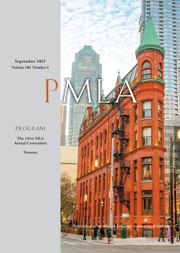No CrossRef data available.
Article contents
Dorigen’s Boundless Subjectivity in Chaucer’s The Franklin’s Tale
Published online by Cambridge University Press: 01 September 2025
Abstract
This essay argues that in Chaucer’s The Franklin’s Tale, Dorigen develops a selfhood that remains unflinchingly available to others. While the tale’s men pursue a closed selfhood subtended by chivalric expectations for heroic masculinity, Dorigen’s porous selfhood represents a different, vulnerable ideal. Dorigen’s selfhood is open and trusting, and it meets the material world in all its ugliness and danger. Throughout her promise and her complaint, Dorigen maintains a subjectivity that is open to all and bound to none; her difficulties, we argue, arise not from naivete but from the ways in which the buffered, chivalric world disallows and even destroys other formations of selfhood. Although Dorigen recedes by the tale’s conclusion, her boundless, permeable subjectivity is held up as The Franklin’s Tale’s ideal, and the threats to it are clearly exposed as broader harms by the tale’s end.
Information
- Type
- Essay
- Information
- Copyright
- © 2025 The Author(s). Published by Cambridge University Press on behalf of Modern Language Association of America
Footnotes
We would like to thank our constant interlocutors: Lisa H. Cooper, Rebecca Davis, Andrea Denny-Brown, and Shannon Gayk.

